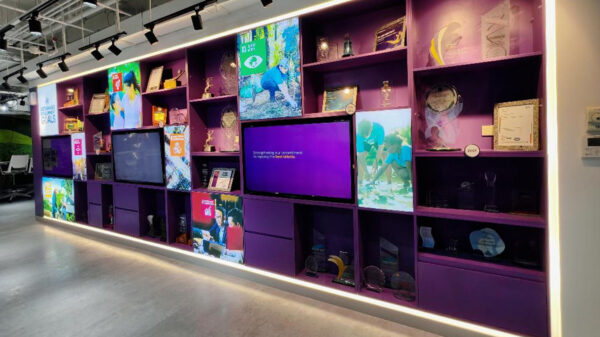A new report from Accenture identified a select group of organizations that treat cloud as a new operating model to continuously reinvent their businesses using innovative, multi-cloud capabilities — across public, private and edge — realize greater business value, well beyond cost savings.
Based on a survey of nearly 4,000 C-suite executives at both private- and public-sector organizations globally, the report, titled “Ever-ready for Every Opportunity: How to Unleash Competitiveness on the Cloud Continuum,” explains why looking at cloud as a one-time migration to a static destination — essentially as a cheaper, more-efficient data center — is limiting. In fact, a narrow focus on cost savings can actually put organizations at a competitive disadvantage compared to those using cloud more strategically across its many dynamic forms, including public, private and edge.
“Most organizations today deploy some mix of public, private and edge clouds, with little integration between them,” said Karthik Narain, global lead of Accenture Cloud First. “As a result, innovation, data and best practices achieved in one part of the organization aren’t benefitting others — thereby impeding value realization. However, a small percentage of organizations are positioning themselves to reap the greatest value from the cloud by viewing cloud as a continuum of technologies that spans different locations and types of ownership, dynamically supported by cloud-first 5G and software-defined networks to support the ever-changing needs of their business.”
The report reveals that while organizations plan to migrate more than two-thirds of their workloads to cloud, on average, over the next three to five years, only half are using the full potential of cloud in its various forms to transform their day-to-day business operations, carry out knowledge work and modernize applications to meet business needs.
Accenture defines the organizations leading the way in cloud as “Continuum Competitors.” These organizations — about 12-15% of respondents, depending on region — stand out by extending the experience they gained from public cloud to their private data centers and edge locations to transform daily business operations. As a result, they achieve substantial gains from their continued cloud engagement and outperform competitors. Continuum Competitors are also much better positioned to withstand future shocks, according to the research.
Continuum Competitors include organizations such as Carlsberg, for example. Beyond operational cost savings, the Danish multinational brewer cites its freedom to innovate and experiment as one of cloud’s key advantages, enabling it to launch new initiatives and campaigns in hours, rather than months. Continuum Competitors are also much better positioned to withstand future shocks, according to the research.
“A company’s future competitiveness hinges on choosing the right type of cloud for the right applications and cloud-based services — such as artificial intelligence, smart contact centers, edge computing, robotic computing, extended reality and others — from across the continuum and implementing the advanced practices needed to leverage those technologies,” Narain said. “By using cloud-first strategies, companies can build better customer experiences, smarter business processes and more sustainable products.”
Unlike organizations whose cloud efforts focus primarily on one-time migration to cloud for cost savings and efficiency, Continuum Competitors are:
- two to three times more likely to innovate, automate and re-engineer knowledge work;
- achieving between 1.2x (North America) and 2.7x (Europe) greater cost reduction than organizations focused mainly on data migration;
- aiming to achieve more operational and financial goals, including targeting up to 50% more business measures, such as increasing customers and going to market faster than their peers; and
- up to three times more likely to use the cloud for at least two sustainability goals, such as using green energy sources, designing for lower power consumption, and using servers more efficiently to reduce energy consumption.
By studying Continuum Competitors’ use of cloud, Accenture has identified four winning cloud approaches applicable to any organization:
- Know where you want the continuum to take you. An organization must first develop a strategy with a vision that clearly states the core values and future aspirations, identifies competitive vulnerabilities and classifies capabilities relative to where the company is today and its future aspirations. They must develop these strategies by taking into account the constant evolution of cloud capabilities across the continuum.
- Establish cloud practices to support and augment your technologies. Organizations need to couple technology adoption with practices that bring discipline and help change non-technology areas at the pace of computational improvements. Agility is the most critical mindset to being a Continuum Competitor; it infuses cloud-first apps, talent transformation, information technology experimentation and compute awareness, among other areas.
- Accelerate innovation to deliver exceptional experiences. Continuum Competitors prioritize their investments in one area: experience. They use a combination of human-centered design and cloud-based technologies such as edge computing to rethink experience to push it closer to where their customers, partners and employees engage. This is done by driving the experience mindset throughout the organization, including products and services, employee experience and delivery models.
- Provide continuous strategic commitment. Leadership needs to establish business objectives, set appropriate risk levels and promote a culture of agility and growth. Organizations must also recognize the “all-hands” nature of the challenge: everyone across the organization needs to be informed of the cloud’s ever-improving potential and best practices.
Accenture’s “Ever-ready for Every Opportunity: How to Unleash Competitiveness on the Cloud Continuum” research arrives at a time when organizations have been forced by the pandemic to provide their customers with unique experiences and serve them in new and virtual ways. Prior research from Accenture found that companies that scaled technology innovation during COVID-19 are growing revenue five times faster than lagging adopters of technology innovation.



















































































































